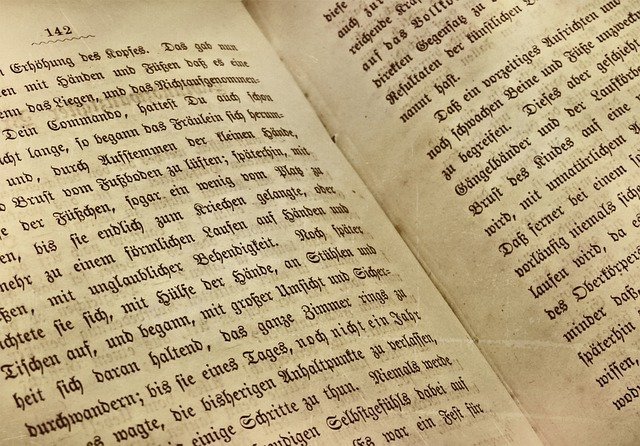Most paper is formed from wood, which mostly consists of polyose and a natural wood element referred to as polymer that provides land plant cell walls their rigidity and makes wood stiff and strong. polyose — a colorless substance that is remarkably good at reflective light, which suggests we perceive it as white. this is often why paper as well as the pages of everything from musical compositions to dictionaries — is typically white.But when lignin is uncovered to light and the encompassing air, its molecular shape changes. Lignin is a polymer, which means it is constructed from batches of identical molecular units bonded together. In the case of lignin, the ones repeating gadgets are alcohols which include oxygen and hydrogen with a smattering of carbon atoms thrown in.

But lignin, and in component cellulose, is prone to oxidation — which means it effectively alternatives up more oxygen molecules, and people molecules regulate the polymer’s structure. The brought oxygen molecules wreck the bonds that maintain the ones alcohol subunits together, growing molecular areas known as chromophores. Chromophores (which means “colour bearers,” or “colour carriers” in Greek) mirror sure wavelengths of mild that our eyes understand as colour. In the case of lignin oxidation, that colour is yellow or brown.
Oxidation is likewise accountable for a sliced apple browning while it is deserted at the kitchen counter. Oxygen withinside the air enters the fruit’s tissue, and enzymes known as polyphenol oxidase (PPO) oxidize polyphenols (easy natural compounds) withinside the pores and skin of the apple, Lynne McLandsborough, a professor of meals technological know-how at the University of Massachusetts Amherst, informed Scientific American. This manner yields chemical compounds known as o-quinones that then produce brown-coloured melanin— the darkish pigment found in our pores and skin, eyes and hair.
Typically, paper producers attempt to cast off plenty of lignin as viable via way of means of the use of a bleaching manner, in step with Richardson. The extra lignin it’s removed, the longer the paper will stay white. But newspaper — that’s made cheaply — has extra lignin in it than a regular textbook page, so it turns a yellow-brown colour quicker than different forms of paper, she said.
Interestingly, the manufacturers of brown paper grocery baggage and cardboard delivery packing containers take benefit of lignin as it makes their merchandise sturdier. These paper merchandises are not bleached, leaving them plenty browner than a regular newspaper, however additionally stiff sufficient to present a bag sporting a milk carton and different groceries its strength.
According to Richardson, theoretically, you can keep your excessive faculty yearbook in pristine condition, furnished you stored out each oxygen and mild indefinitely.
“Oxygen is the enemy,” she said. “Keep the book in a wonderfully sealed container and update the oxygen with nitrogen, argon or some other inert [meaning it doesn’t readily undergo chemical reactions] gas, and you are set.”
But even as oxygen-wealthy situations are awful for paper, daylight and excessive-moisture ranges also can negatively affect paper preservation, Richardson noted. For instance, any e-book it’s surrounded via way of means of oxygen will yellow, despite the fact that it is stored in a dark room. “Sunlight simply hastens the oxidation manner,” she said.
Ensuring that our newspaper clippings live crisp and legible is one thing, however preservationists, archivists and librarians salary a consistent conflict between paper degradation and oxidation. Preserving critical historic documents — something from a nondigitized will to the Emancipation Proclamation — calls for cognizance of what environmental elements can harm paper merchandise.
How to Keep Your Books From Yellowing?
It’s all due to this complicated molecule called “lignin.” It’s a darkish substance observed in timber, and that’s accountable for the hardness of the timber. But whilst the timber has become paper, the lignin is retained, and it is the publicity of lignin to air and daylight that reasons the yellowing you notice in your books.

Low-best paper carries 20% lignin and they yellow easily.
Look simplest for your standard, each day newspaper for an example. High-best papers, that are processed greater thoroughly, incorporate the simplest 1% of this substance, and they withstand yellowing for a terrific lengthy time.But now no longer all books are to be had in fantastic paper, so this is how you could maintain them in tip-pinnacle condition:
Store them far from direct daylight.
Ultraviolet rays purpose fading at the covers and spines and sell yellowing of the pages a great deal faster.
Store beneath neath slight humidity.
Paper will become brittle in an area that is too dry. On the opposite hand, paper can develop mold in a place with quite a little moisture withinside the air. Ideal humidity has to be 50-60%. Use a humidifier or a dehumidifier withinside the room.
Allow for correct air circulation.
Leave some inches of area among your books and the wall or the insides of your shelves.This has to maintain your books well-ventilated and much less at risk of yellowing and growing mold.
Use archival paper among the pages of the book.
It’s impractical for a whole library, however achievable for a small series or numerous of your maximum precious or maximum steeply-priced volumes. This unique paper absorbs unfavorable acid from the pages, maintaining them in pinnacle condition.
Handle properly.
Some widespread guidelines and not unusual place understanding pass a protracted way: deal with your books with easy hands; do not location them on grimy or moist surfaces; use plastic covers for delivered protection; dirt and easy your library regularly, and make certain your books might not get bent or wrinkled if you are taking them with you for your bag.
